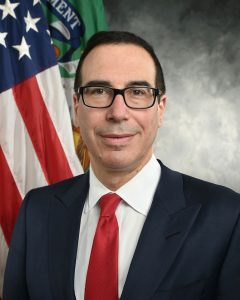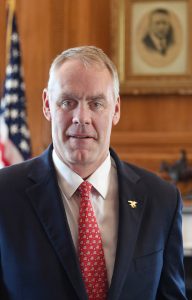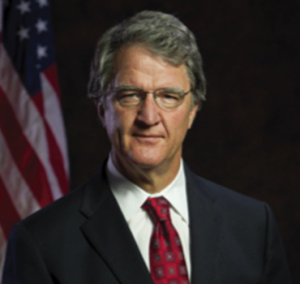COVID INFECTIONS AT THE WORLD’S FAIR OF MONEY
The following excerpt was part of an email sent by the ANA this afternoon:
If you feel ill or are displaying any COVID symptoms, consider quarantining for 10 days and/or getting a COVID test.
I have made my feelings known about the COVID-19 pandemic. It is the primary reason why I did not attend the World’s Fair of Money.
Every time I write about COVID-19, I receive at least a dozen emails filled with vitriol. The fact is that over 99-percent of those hospitalized with COVID-19 are not vaccinated, and 100-percent of those deaths are not vaccinated. Today, Alabama announced they have run out of ICU beds.
In the meantime, I hope that the ANA did the responsible thing and notified the appropriate people in Cook County, Illinois. They should make sure that the convention center workers are safe.
I will not attend a coin show regardless of the size until the pandemic subsides, including the Whitman Expo scheduled for November. I will deal with the short-term inconvenience for my long-term health.
Please stay healthy and safe.
Please get vaccinated!
POLL: What do you use for a price guide?
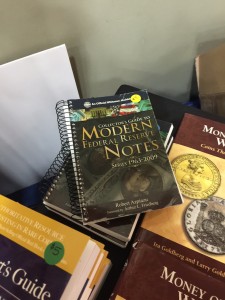 While thinking about modernizing the hobby it came to me that there is one aspect of the hobby that may still be stuck in the 20th century and that is price guides.
While thinking about modernizing the hobby it came to me that there is one aspect of the hobby that may still be stuck in the 20th century and that is price guides.
Price guides are supposed to be the guide that tells buyers and sellers the value of a coin. But over the years price guides went from being an art form to a statistical business with many different players vying for your attention.
Some of these guides have a good reputation while others may not be considered the best sources for prices. In either case, collectors have been known to use both the good and not so good to determine the price of their collectible because ultimately, the price is what you are willing to negotiate with the dealer to pay for the item regardless of what the guide says.
I started thinking, what do collectors use as their guide for pricing? Do they use more than one guide? If they buy a hardcopy (“dead tree edition”) do they buy new copies every year?
Today’s poll wants to know what you use to determine the price of your collectible or the acceptable price to buy or sell that special item.
Weekly Numismatic World News for October 22, 2017
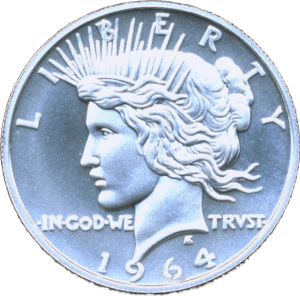 The Coin Collectors Blog has been and always been about collecting numismatics in all forms from a collector’s point of view. As I am coming up on my 12th anniversary of writing this blog, I would like to address a few comments I have received via email.
The Coin Collectors Blog has been and always been about collecting numismatics in all forms from a collector’s point of view. As I am coming up on my 12th anniversary of writing this blog, I would like to address a few comments I have received via email.
As a reminder, a blog is short for “weblog” which, according to Wikipedia, “is a discussion or informational website published on the World Wide Web consisting of discrete, often informal diary-style text entries (“posts”).” It is not a news site or a site that adheres to certain editorial form. Although news organizations now use blogs and blogging platforms, the Coin Collectors Blog is not pretending to be a news outlet.
When I started writing the Coin Collectors Blog in 2005, not only were there few coin collecting resources on the web, but there were no blogs. I wanted to provide some information, discussions, and (yes) opinions on every topic in the world of numismatics that I thought a collector would be interested in hearing about.
I also have made my interests clear. I will discuss everything that affects numismatics including the monetary policy that concerns the circulation of coins and currency and the people involved. This includes the politicians, both elected and appointed, that have direct involvement in any area that affects numismatics.
One of those politicians is Secretary of the Treasury Steven T. Mnuchin. As Secretary of the Treasury, he is in charge of every bureau in the Treasury Department including the U.S. Mint and Bureau of Engraving and Printing. Thus, what happens to Mnuchin can affect those bureaus. As far as I am concerned, that makes Mnuchin fair game for coverage on the Coin Collectors Blog.
After I reported about Mnuchin’s visit to Fort Knox, a U.S. Mint-managed facility, that both the Office of the Inspector General and a public interest group were looking into the travel and its costs. Since the story concerns the Secretary of the Treasury visiting a U.S. Mint facility, I felt it was my right and responsibility to report on.
Although there have been other issues with Mnuchin reported, they did not involve his department leadership as it pertained to the U.S. Mint or Bureau of Engraving and Printing. I did not feel it was appropriate to write about it on the Coin Collectors Blog.
- Steven T. Mnuchin, the 77th Secretary of the Treasury
- Secretary of the Interior Ryan K. Zinke
More recently, I wrote about Secretary of the Interior Ryan K. Zinke having his own challenge coin. Although Zinke is not in charge of anything regarding the U.S. Mint or Bureau of Engraving and Printing, the fact that he has a challenge coin is significant. Collecting challenge coins is part of numismatics and any government agency official that decides to have his own challenge coin should be fair game.
In both cases, I was accused of stepping into politics in a bad way.
I know political discourse has changed, but I am still the same blogger who has covered numismatic bills in Congress, which there is a monthly status posting; nominations of Directors and Treasurers; defended the ancient coin collectors from the State Department; and posted a tribute to Mike Castle, the former Republican Congressman from Delaware who introduced many numismatic-related bills including that law that became the 50 State Quarters Coin Program.
It has and always will be my policy to keep the content of the Coin Collectors Blog on topics related to numismatics, numismatic production, collecting, and the conditions that affect this world, including the action of the government officials with oversight of the related organizations, especially if there is a direct effect on the industry.
Comments are welcome and encouraged, but I wish some of you would comment on the posts—and remember, comments are moderated to prevent spam only. Sometimes the email I receive is very creative but have been asked not to share. I hope that you reconsider next time.
Now for the news…
Currency modernization will help secure our financial futures and save billions of dollars for taxpayers.  → Read more at cnbc.com
→ Read more at cnbc.com
(ArtfixDaily.com) Richmond Hill, ON – Thursday, October 26 marks 888 Auctions’ inaugural auction dedicated to numismatic items with a special focus on Chinese gold and silver panda coins. The 426-lot auction will also be featuring rare coins from all over the world and will also be accompanied by 888 Auctions’ usual complement of Asian fine and decorative arts, including finely carved jadeite objects, porcelain ceramics, furniture and jewelry.  → Read more at artfixdaily.com
→ Read more at artfixdaily.com
Share During the Western Han Dynasty (206 B.C. – A.D. 9), the question of monetary freedom was vigorously debated. There were as yet no banks or paper money in China — money consisted solely of coin.  → Read more at cato.org
→ Read more at cato.org
Summary Harry Dent used to say gold will fall to $250, then $400, now he says $700. What are we to believe?  → Read more at seekingalpha.com
→ Read more at seekingalpha.com
Archeologists regularly stumble over troves of gold coins dating back centuries, proving that money is as old as civilisation itself. Cash, however, brings practical limitations when it comes to how much we can physically move about, which is why currencies also depend on a system of trust to allow easier representations of physical coins, gold etc.  → Read more at thenational.ae
→ Read more at thenational.ae
BENGHAZI, Libya, Oct 20 (Reuters) – Authorities in eastern Libya will circulate their own coins for the first time to ease shortages of money, a central bank official said on Friday, in another sign of disunity in the country that has two rival governments in east and west.  → Read more at af.reuters.com
→ Read more at af.reuters.com
Noma Bar for Reader's DigestWhen Joan Langbord found ten gold coins in a family safe-deposit box in 2003, she knew she’d unburied a treasure. Langbord, then 75, had worked in her late father’s Philadelphia jewelry store her entire life, and she was fairly sure that the coins were 1933 double eagles.  → Read more at rd.com
→ Read more at rd.com
The coins went out of circulation on October 15 but can still be deposited at banks, building societies and post offices  → Read more at burtonmail.co.uk
→ Read more at burtonmail.co.uk
Chief of Staff of the Army Gen. Mark Milley stands beside the design for the back of the World War I commemorative coin, dubbed “poppies in the wire,” after he unveiled it Oct. 9, 2017 at the Association of the U.S. Army Annual Meeting and Exposition.  → Read more at aerotechnews.com
→ Read more at aerotechnews.com
LeRoy Transfield Interview — PART II
- 2018 World War I Centennial Silver Dollar Obverse — “Soldier’s Charge” by LeRoy Transfield
- 2018 World War I Centennial Silver Dollar Reverse — “Poppies in the Wire” by LeRoy Transfield
LeRoy Transfield discusses designing WWI Commemorative
Secondly, I was excited because I am a sculptor and love sculpture of all kinds. My specialty is sculpture in the round, figures, people. I have done very few low relief sculptures and no coins. Despite this, I enjoy looking at well-sculpted coins and even have a small coin collection of my own. My favorite American coin is the Standing Liberty quarter by Hermon MacNeil.
Thirdly I have done a number of war memorials for local towns in the area including the city I live in. During these experiences, I have gotten to know many veterans and people that fought in most of the major wars of the 20th century. Many of them including people I worked very closely with are now gone. But I often think of them and how their lives have touched mine.
Last, I was inspired by my own family. Both extended and immediate. I have been supported and helped over the years and always feel grateful for their support. Also, my Great Uncle on my mother’s side actually fought in World War One as part of the Maori Battalion. The Maori Battalion were part of the New Zealand Expeditionary Force to aid the allies. The Maori are the indigenous people of New Zealand.
All this excitement and energy flowed through me when I first got the news that I was a finalist. I so wanted to create a great design! Even though I had seen many WW I movies already and new the history, I review many pictures, books, films and documentaries to focus on the American role in the war.
I also looked at great coins. Not so much as to get an idea for a design or copy them, but to dissect those good coins and figure out what made them so good compared to average coins and what rules helped them achieve such inspiring results. I wanted an original design but one that followed those lines of greatness.
I thought about the poem, In Flanders Fields and thought Poppies would be a good thing to put in there somewhere. I also thought of the armistice and how excited everyone was when the hour came. A peace that may well not have happened without American support.
With all these thoughts, I started drawing images. I drew for two weeks. Ideas and designs of mostly soldiers in different poses that could easily be accentuated in a relief coin design. After this I started making clay versions of my sketches and quickly realized the drawings were useless and didn’t help me see problems in the design once it was built up in clay.
After about 4 or 5 weeks I was hitting a wall. No really good design was standing out from the numerous changes and trials I had done. The mint offered a conference call to all 20 participants to go over any questions we might have. This was of great help. In the call, I asked, what is the most common mistake made by beginning coin designers. The person, I forgot his name, said the most common mistake was adding too much detail to the 8-inch mock-up because one has to keep in mind that the final will be only 1.5 inches and much of the detail will be lost. Even though I already knew this it sank in even more. The other impression I got from the call was that the mint is really leaving things open to the finalists and wants to see what we can come up with, and not worry a whole lot about whether the design is right for coining as they have sculptors would fix those problems. They just wanted to see what we could come up with.
The first thing I did was scrap the board I was working on. At 18 inches, it was way too big. I thought that in working larger than the required 8 inch casts to be submitted, I could make a good large design and boil it down to a really good 8-inch final. Instead, I went the opposite way and started to work smaller than the 8 inches to get a better feeling of a coin. I started sculpting on 4-inch wood discs. This really helped a lot. It made it way easier to make a quick design and
help me see if it was going to work. I finally came up with the soldier profile, collar up and a rifle slung over his shoulder. This was not the final design but a good starting point. As I had the soldier in profile worked up, I wanted to add to it but knew not what it needed. That night I had barbed wire going through my head. Soldiers charging barbed wire, wire in the dirt and finally somehow, wire on my relief sculpture. After dreaming about barbed wire, I went to the piece and add the two small strands of wire in opposition to the rifle and the soldier. The hands also seem a natural thing to add and just like that I had the design for the Obverse.
I was very demanding on myself and didn’t say, that’s it, that’s the one. What I said was that’s a good Obverse, now make another. Another one never came. I was running out of time so I decided then to make that my Obverse and put my thoughts into the reverse. I actually thought I had a good idea already, an eagle. It was going to be a diving eagle, in profile, with wings outstretched holding arrows and an olive branch. In the eagle’s beak would be a banner with the words e plurubus unum. In the background would be a map of Europe. I just knew it would look good. But when I fleshed it out it looked terrible!
I looked for another idea. It had to be as good as the soldier. The eagle didn’t work but I wanted to try a bird again and knew that carrier pigeons were used a lot in World War One so I decided to use a pigeon. I looked at many pigeons and pigeon photos and sculpted up something I thought looked ideal. This was good because the time for submitting was running out! I had only three days left.
With the pieces molded and cast to the 8 inch specifications I had the two designs. The soldier looked good. I had different thoughts about the pigeon. I sculpted the bird as best I could but the final reverse looked not near as good as the obverse. I was dumbfounded. I had to send the pigeon, time was up, I had no time to make another. But as I looked at the pigeon I became more and more alarmed to the point where my stomach ached to look at it. I was tired of the whole project.
I thought I should just send it and be done with it. But on more reflection, I just couldn’t do it, I couldn’t send it!
Firstly, I thought of the embarrassment of the committee seeing this lousy pigeon. I wouldn’t be there, I reasoned, but that didn’t help. Sure, they might like the soldier, perhaps they will choose that and another reverse. Even so I just couldn’t send it. So, I did a thought conversation and said to myself if you don’t like it they make something else, in your style, that you do like. Even if the committee doesn’t like it at least you can be happy with what you send and no regrets. But then I would vacillate back to you have run out of time just send it and be done with the thing.
At that time, my daughter wanted to go on a 9-mile bike ride up Provo Canyon, a favorite summer activity and jump off a local bridge into the chilling Provo river. School was about to start so this would be one last activity with my daughter. The ride there took about an hour. In retrospect, this time away made all the difference in my final decision to send a different reverse. As I left and rode away from my work I had a greater perspective. I could see I had learnt a lot in the last 10 weeks about coin sculpting and may well be able to come up with a good design in two days. Halfway into my ride I convinced myself that the pigeon had to go and now, what was I going to do to replace it? As we got to the bridge I came back to the beginning, poppies. But poppies are a little uninteresting and not that good looking in relief coin sculpture. So, my next thoughts were how to make the poppies look better.
This was all going on while I was enjoying the summer weather and river water with my daughter. To jump into the river, one would climb up on a steel rail about 4.5 feet above the bridge, balance there and jump into the water 15 feet below. It was exhilarating. Standing on top of the rail is quite an inspiring thing. The beautiful canyon, trees, rocks, and water looked awesome. I often thought that on a stormy day a bolt of lightning could easily find its way to the person standing perched so high on the bridge. As I stood there I thought came to me of using the barbed wire again in contrast to the poppies. I’ve got it I said and jumped into water fridge water. I had it all now, in my mind.
All I needed to do was go home and put in down in clay. When I got home my wife to catch up with me on her day. We talked about the recent passing of my old sculpture teacher and some of the funny stories he would tell us students. All this time I was sculpting the poppies and the wire. In an hour, it was done. That’s it! I said. I was unsure if it was a winning design but it was a design I could put my name to and come what may, I wasn’t embarrassed.
The plaster casts made it to the US mint the very last day of the deadline.
Diehl & Moy endorse change
Could the recent cyber attacks and growing severity of cybersecurity issues become the motivation for Congress to vote to reform United States currency?
According to Philip Diehl and Edmund Moy, former Directors of the U.S. Mint, the discussion as to remove the cent and paper dollar from circulation should be part of the current budget and tax overhaul debates.
-
Philip N. Diehl
35th Director of the U.S. Mint
June 1994 — March 2000
-
Edmund C. Moy
38th Director of the U.S. Mint
September 2006 — January 2011
The discussion is the same as it has been. The cost of zinc has risen causing the manufacturing costs of the Lincoln cent to climb above its face value. Even with operating efficiencies that have brought down the cost of manufacturing to its lowest levels in many years, the price of zinc keeps makes the materials cost more than the coin is worth.
As for the paper dollar, the Government Accountability Office has published several reports over the years that demonstrate the cost savings between using the paper dollar versus a coin dollar. The last GAO report (GAO-13-164T) concluded that using a dollar coin instead of the paper note “could potentially provide $4.4 billion in net benefits to the federal government over 30 years.”
This is not a new discussion. The only change is that this is being suggested by former Directors of the U.S. Mint from both sides of the aisle. Diehl was appointed by Bill Clinton and served from June 1994 through March 2000. Moy was appointed by George W. Bush and served from September 2006 through January 2011.
Earlier this year, Sen. John McCain (R-AZ) introduced the Currency Optimization, Innovation, and National Savings Act of 2017 (COINS Act) (S. 759). McCain’s bill would require:
- Suspending the production of the one-cent coin for 10 years except for collectibles. After three years, the GAO would doe a study to determine whether production should remain suspended or should be reinstated. This would not demonetize the cent.
- Change the composition of the nickel to 80-percent copper and 20-percent nickel. This should bring down the cost of materials used in striking the five-cent coin to be on par with its value. Efficiencies in manufacturing could lower costs further.
- If the bill becomes law, two years after it is enacted, the Federal Reserve will begin removing $1 Federal Reserve Notes from circulation. This will probably be done by the banks who will take the notes on deposit and send them back to the Federal Reserve where they will be destroyed. Coins would take their place. The $1 FRN could still be produced for the collector market.
Sources report that the chances of McCain’s bill getting a hearing are minuscule. While having lunch with on congressional staffer, I was given three reasons why Congress will not address this issue:
- States with a large rural population primarily west of the Mississippi River represented by Republicans are unlikely to support the removal of the one-cent coin. Removal of the coin is viewed as a hidden tax against the people with fear mongering that suggest the government is keeping the extra money that would become on the rounding of prices.
- States with large poor populations, primarily in the south, and their advocates who believe that taking away the pennies are a way to separate more money from poor people who can least afford to lose the ability to pay in cents.
- Surveys show that most of the people older than Millenials are against removing the paper dollar. Since this population constitutes the majority of the voters and donors, the politicians are not about to make those people upset.
Another issue is that McCain is not popular amongst his fellow Republicans. If the issue is addressed, it is likely to be discussed as part of a bill that does not bear McCain’s sponsorship.
Given the partisan nature of politics and the perceptions of the members of Congress, there is a very little chance of the Coins Act or any similar legislation being enacted during this session of Congress.
